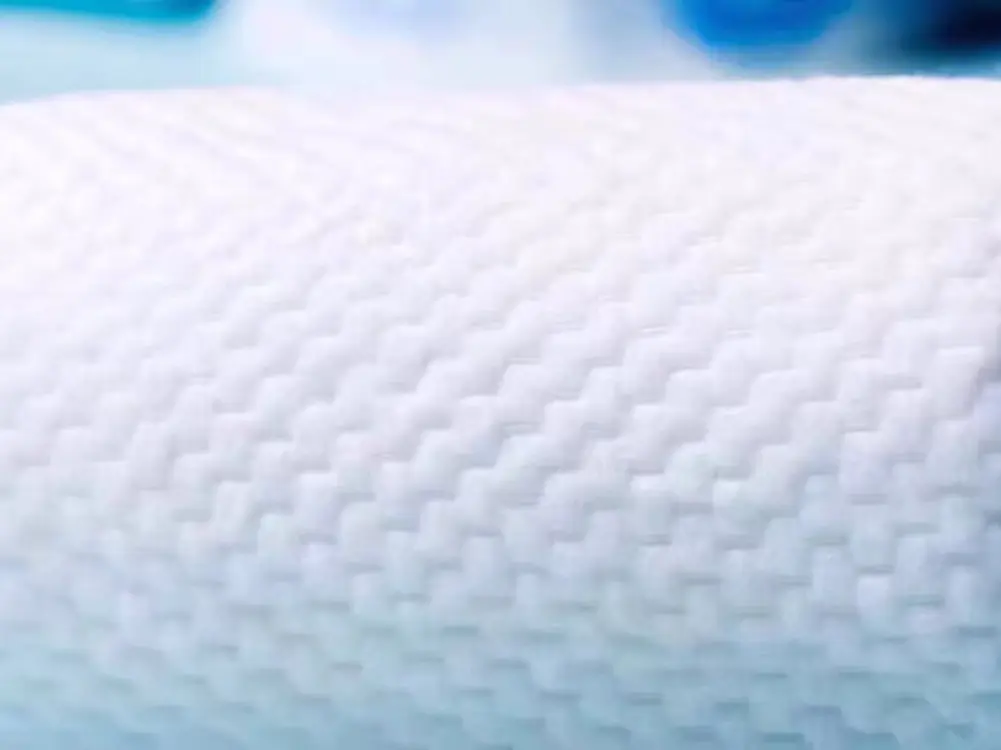Diapers were originally invented in 1942 and consisted of a plastic film wrapped in crinkled toilet paper. The absorbent core made up of crumpled toilet paper was prone to breakage and fragments tended to stick to the user's skin. As a result, diapers were not widely accepted and used for a long time. But what kind of development can be widely accepted?
In 1960, Procter & Gamble in the United States used non-woven materials and fluff pulp as the absorbent core layer of baby diaper, which greatly improved its performance. In 1980, Japan Unicharm introduced SAP into the absorbent core layer for the first time, which significantly improved the liquid absorption and liquid retention, and further improved the design and quality of baby diaper.

Today, foreign research on absorbent core materials continues to optimize the mass ratio of SAP and fluff pulp to find absorbent cores with low cost, good comfort and excellent performance. At the same time, foreign scholars continue to optimize the SAP synthesis process and fluff pulp production process to obtain high-quality and low-cost baby diaper. On the basis of not changing the original performance, Procter & Gamble has launched a thin and environmentally friendly fluff-free pulp baby diaper called DryMax. The absorbent core layer includes a high absorbent resin layer, and the current-guiding layer is arranged above the high absorbent resin layer. The entire absorbent core is wrapped with upper and lower textile adhesive. The product not only has a small thickness, but also greatly saves the production of raw materials, which points out the way for the future development direction of the absorbent core layer. Subsequently, US9173784B2 patent number also introduced an absorbent core without fluff pulp, which is composed of SAP particles wrapped by two upper and lower layers of non-woven fiber webs. Among them, the upper non-woven fiber web is formed into a wave shape, and is bonded to the grain with the lower fiber web by hot melt adhesive. The core body reduces the use of fluff pulp, thereby reducing the thickness of the product, and the SAP particles are fixed to the core layer by hot melt adhesive, which prevents the SAP particles from slipping. However, the superabsorbent resin particles in such an absorbent core tend to swell and swell rapidly after being absorbed, causing liquid to concentrate in the same part, resulting in deformation of the core layer.
In order to solve this problem, the patent number US10149788B2 introduces an absorbent core layer with a width greater than 3mm, which is composed of an absorbent layer and a base layer. bonding. At the same time, there are many longitudinally distributed grooves on the core, through the thickness of the core layer, the liquid is more uniformly distributed along the longitudinal direction of baby diaper, and the SAP particles are increased. However, the core is easy to rewet, resulting in the surface layer not being able to stay dry, thereby reducing the comfort of use.
The theoretical analysis and model establishment of the absorbent core layer have made rapid progress abroad. Dipayandas et al. simulate the liquid absorption process, and through experimental verification, people can better understand the liquid absorption principle at the theoretical level, and provide theoretical guidance for further research on the wicking layer. Dust-layer (stepped powder structure) absorbent body is a relatively new absorbent core layer. The absorbent core layer has good longitudinal water conductivity and impermeability, good structural stability, and is not easy to be broken. At the same time, the underlying structure does not contain SAP particles, which prevents the baby diaper's leak-proof bottom film from being punctured.
From the above research content on absorbent core layer, it can be seen that foreign countries mainly study the structure and theory of traditional absorbent core layer, lacking comprehensive research on the performance of core layer, and there is almost no relevant research on the application of super absorbent fiber in the core layer of diapers. It can be seen that foreign research on the core does not fundamentally solve the problem of easy swelling after absorbing highly absorbent resin particles.
Comment(0)
You can comment after
SIGN IN